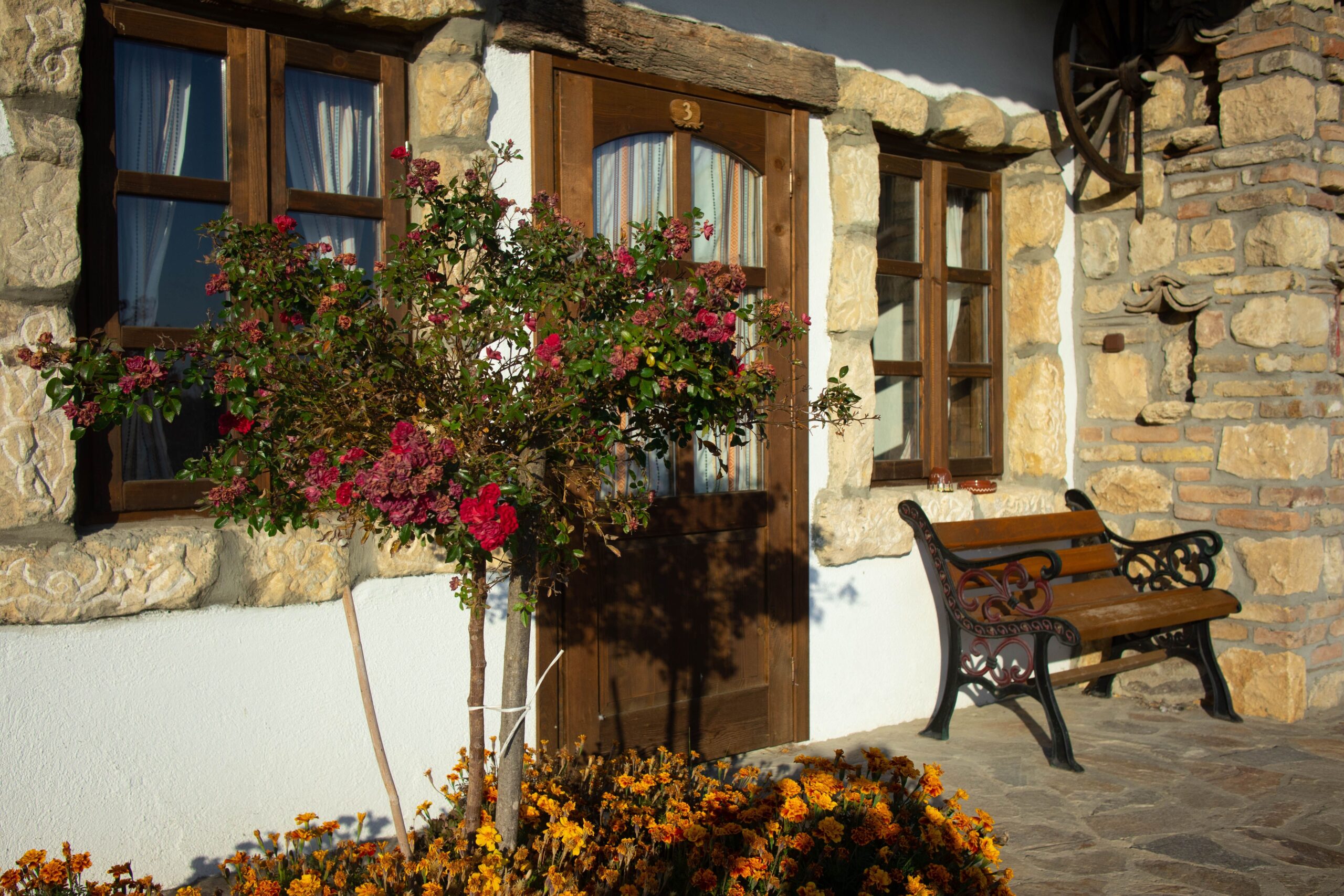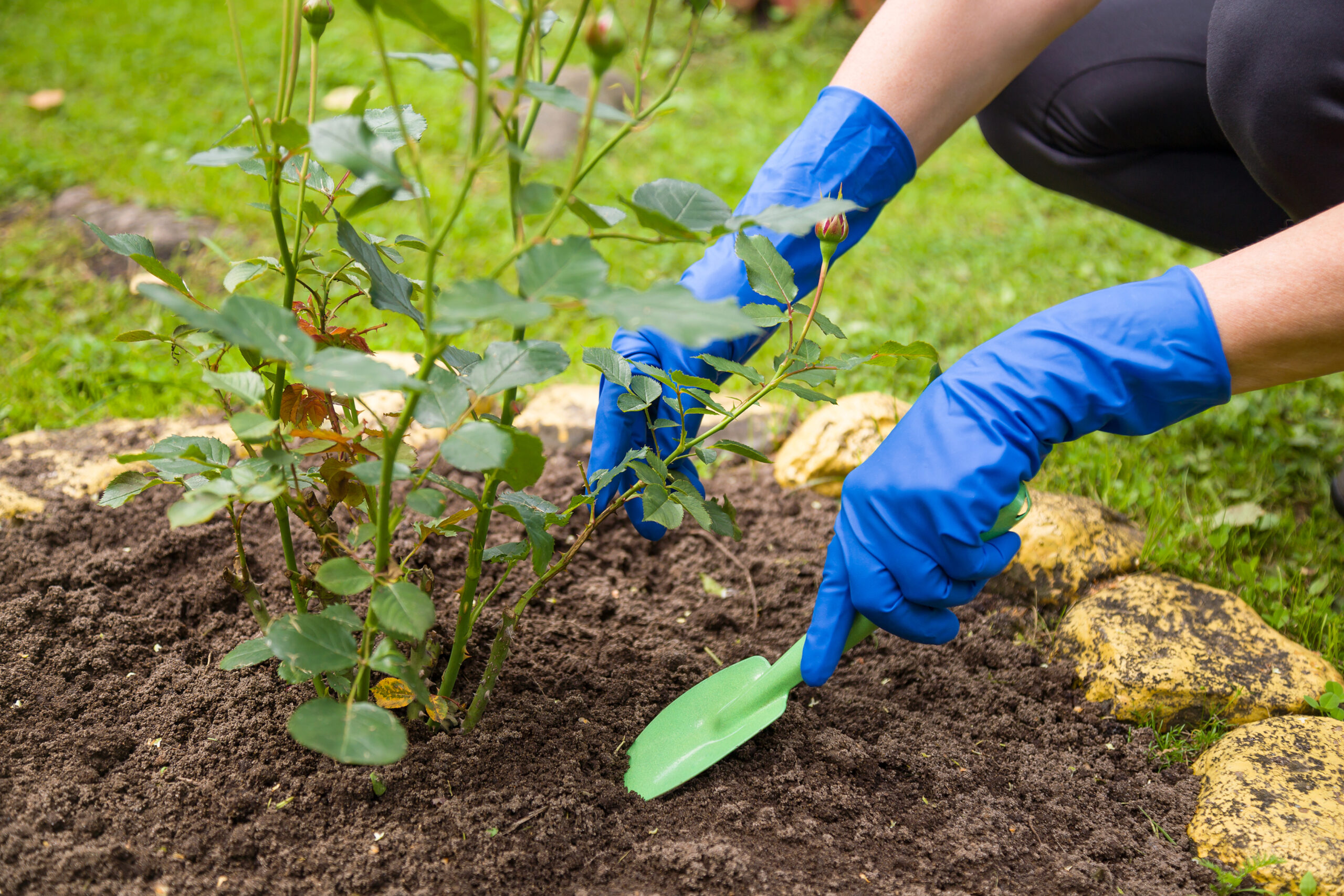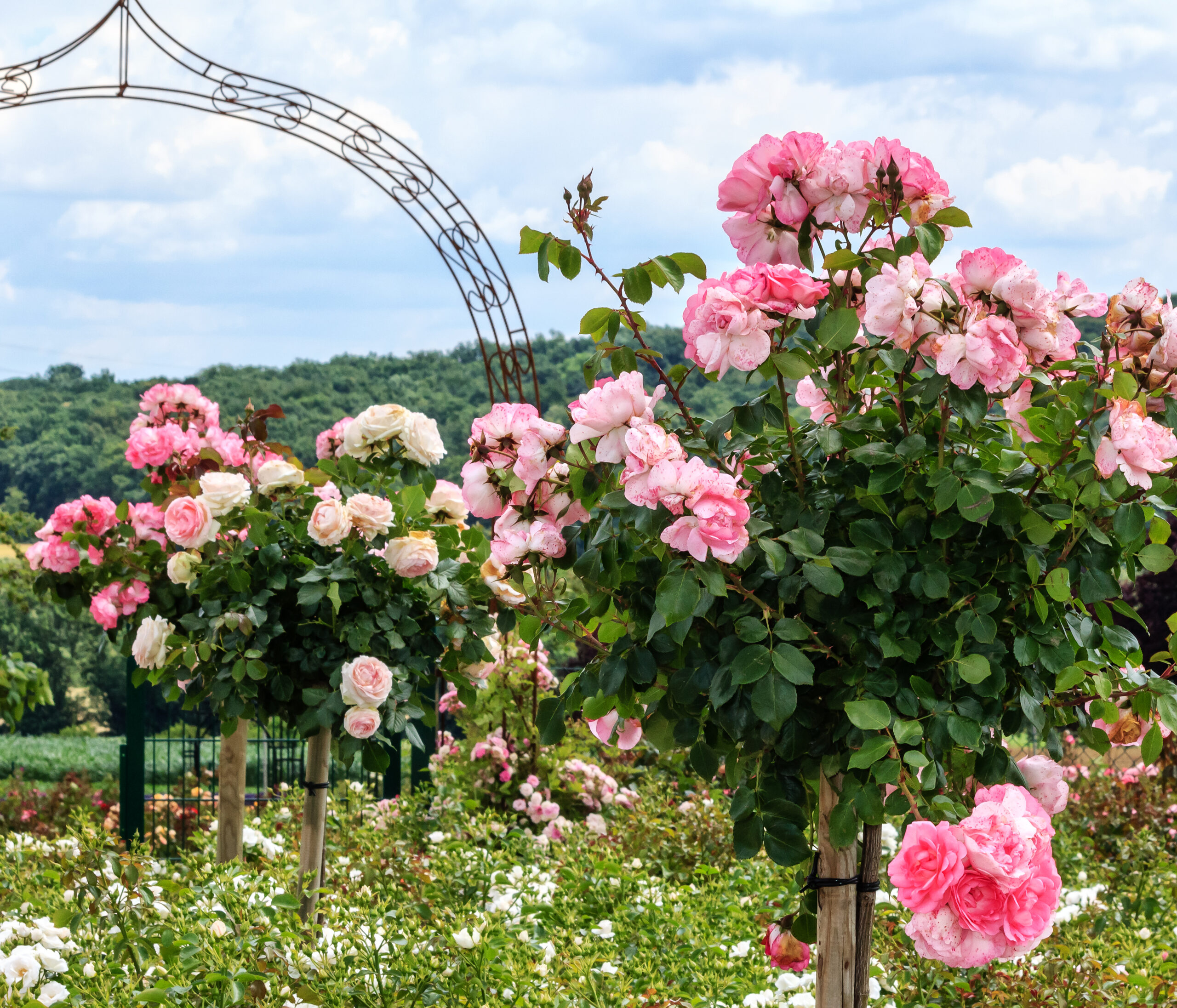==================
A Caveat and Affiliates
First off, a little caveat: within my articles you will find affiliate links, meaning if you buy them, I get a small commission. Your cost is not affected. In addition, I am an Amazon Associate and I earn from qualifying purchases on Amazon.
And yes, if I say that I recommend a product here, it means I truly believe it is a good product. I refuse to recommend any product that I have not researched and believe to be a good value.
Even better, I provide you with a very clear picture of the product, it’s use, and the probable value.
Earning your trust is important to me. I run this website myself and the commissions and donations help support the site.
Sound reasonable and fair enough? Let’s continue to the article.
==================
Wondering how you should look after your standard roses? Cheer up! This guide will cover everything you need to know about growing rose trees—from its history to how and when to plant, plus pruning tips.
Tree roses are actually roses that have been trained or grafted to have a long main stem and a bushy crown of peduncles, leaves, and flowers. Naturally, their name comes from their resemblance to tiny trees.
Nevertheless, a tree rose is not a typical tree but rather a standard. A standard is a shrub that has been trained or grafted onto a single, upright stem similar to those of a tree. That’s why they are more commonly referred to as rose standards than tree roses.
In the wild, roses do not develop like trees; nor do they have a stem topped by branches. Instead, they form a shrub with many branches. Botanically, a tree rose is created by grafting a rose bush onto a long stem that is attached to a sturdy rootstock. The majority of rose varieties can be grafted.
Most roses used in rose trees are able to grow in USDA plant hardiness zones 4 through 12. They can be anywhere from two feet tall to eight feet tall. Smaller ones, often referred to as patio tree roses are ideal for containers.
Rose trees can withstand winters as cold as -13 degrees Fahrenheit (-25 degrees Celsius), but they can’t bloom without sunlight. For this reason, it would be wise to pick a sunny spot that offers protection from the strong wind.
A Brief History
Tree roses were developed in Europe toward the end of the 18th century, most likely in Germany or France. At the beginning of the 19th century, several nurseries in Germany specialized in providing standard roses with root and stem stock.
At the same time, formal French gardens grew a lot of them. In Victorian England, they gained popularity among the gardens of nobles. There, the rose standards, which later became standard roses, got their name. As mentioned, any Rosa variety can become a rose tree, though certain types can be more suited than others.
However, Dr. Huey is commonly used as the tree trunk due to its incredibly robust roots. By doing so, the tree rose breeders benefit from a sturdier base and quick growth. While “Manetti,” dog roses (R. canina), wild species types, or a hardy R. multiflora are used as rootstocks occasionally.
The stems on the other hand mostly come from R. canina or multiflora. And the tops are typically grandiflora, floribundas, and hybrid tea, though you might also see something else.
There are no clear rules on what types of rootstocks and stems should be used. Gardeners preferer using similar species, and at times use varieties. Whereas the scion is almost always of a different type.
Growing Rose Trees
Rose trees can be planted, watered, and fertilized in much the same way as any other shrub rose. Regardless, it will still take some time and perseverance to learn how to grow standards.
Moreso, a rose tree can only add a dramatic blooming focal point to your patio or yard through proper caring and preparation. Well, I’m sure you are excited to know how so let’s get started!
How to Plant Rose Tree
One of the most crucial steps in growing rose trees is planting. Rose trees will undoubtedly settle in if they are planted correctly, facilitating growth and bloom.
When picking a spot to grow, plant standards where they won’t be prone to frequent strong winds. Without precaution, winds can break or blow over your plants easily.
When you have backfilled the hole with soil, the bud union should be just above ground level. The bud union ought to end up level with the ground as the plant settles.
Though planting in the fall (particularly in early November) is always preferable, the season really doesn’t matter. For a more straightforward way of planting, follow these instructions:
- Create a hole that is roughly 20 inches (50 centimeters) wide and 16 inches (40 centimeters) deep. For root growth, the size of the hole is important.
- Manure and seaweed can be used as soil conditioners to cover the bottom of the hole.
- Furthermore, root growth enhancers can be added.
- The next step is to add planting soil mix to the dirt from your garden. You can also use rose tree soil mix or all-purpose potting soil.
- To separate and fan the roots, gently run your fingers through them. This can be done with a tool or just your fingers.
- To rehydrate the roots, place the clump in a bucket of water and let it sit. Your rose tree’s success in settling in is greatly enhanced by this action.
- Spread the roots along the bottom of the hole and position the clump in the middle.
- Proceed cautiously to avoid damaging the roots.
- Backfill with the soil mix, pressing everything down so that there is no room for air between the roots and the soil.
- Apply a lot of water and press the soil back down.
Planting Bare-root Rose Tree
Roses can be purchased with bare roots or in containers, often the pot in which they were first planted. If you want to replant them directly on the ground, plant them at the same depth as they were growing in a container. When planting a bare-root rose tree remember to:
- Soak the clump in water.
- Cut roots up to 8 to 10 inches (20 to 25 cm) long.
- Dip the roots in root dip mix to increase the surface contact between the roots and the soil mix.
- When planting, press down thoroughly so that all of the roots touch the soil mix and garden soil.
Also, plant bare roots with the lower bud union just above the soil. Unless you’re planting in Zone 7 or lower, in which case you should sink the bud union a few inches below the soil.
To keep your plant happy after being planted, you will need to follow a few basic care instructions.
Verdict
Growing rose trees certainly have a big impact on the garden for such a small plant. One can be the focal point that will captivate everyone’s attention. A row of them makes an even bigger impression! I hope this guide gave you the confidence to plant your beautiful new plants.
Bonus: Types Recommendations
The following types of Rosa are excellent choices available if you want a standard that is less delicate and requires less upkeep. Anyway, here are my top recommendations.
- Wild rose. Due to their smaller size, wild rose flowers are lighter than floribunda or hybrid tea flowers. Think about it, heavier and larger flowers are prone to break, tip over, or tilt the stem.
- Renae. Renae is a great choice if you want a weeping tree. It is hardy, has no thorns, is fragrant, and has small, semi-double, light pink blossoms on its graceful weeping branches.
- Silver Jubilee. The large, full, double blossoms of silver jubilee are very rich in fragrance.
- Blessing. This flower is a hybrid tea with large, repeat-flowering salmon pink flowers.
- Polar Joy. Last but not least is polar joy. This plant does not have grafts because it has its “own root.” So instead of being grafted, it is trained to look like a tree. It also was bred to be extremely disease-resistant and winter-resistant. More importantly, you don’t need to be concerned about suckers because it comes from their own root. The pink, petite blossoms have delicate yellow centers.
Rose Grafting on a Rootstalk
Rose rootstalk or understalks are the base in which cutting rose buds (also called scions or eye buds) are grafted.
As a basis, use a sturdy rootstalk supported by tree stakes. Cut a scion of your favorite rose with at least three buds and a length of 6 inches. As it will fit into the rootstalk like a jigsaw piece, a diagonal, slanting cut is required.
Cut the rootstalk about half an inch long on a slant. Insert the scion into the rootstalk and tape it down. As your roses develop, use wooden stakes to push the rootstalk upward and eliminate any lower branches.
Pruning
Pruning is going to be one of your most challenging tasks. In addition to keeping the plant in its original shape, you must look out for suckers. You’ll have to be even more careful if your rose was grafted onto the roots of “Dr. Huey.”
To prune this type of plant you’ll have to cut or tear any suckers that appear below the top graft union as soon as you see them to prevent this from happening. Then scrape away the soil and trim or rip each sucker at the base if it emerges from the ground. The soil should then be refilled and compacted.
To alleviate the shock of pruning, reinforce the soil around the tree’s base and fertilize it. As the bush grows, remove or trim any new stem growth.
For the first few years, keep the weeping or heavy-headed plants’ heads cut back by half in the winter to encourage the stem to grow. Reduce their height slightly after they have finished blooming.
The shape should then be maintained throughout the summer by deadheading and cutting back any extremely long branches. Otherwise, if you want it to look more like a shrub rose, get rid of any canes that look dead, weak, or sick.
How you prune depends on how you want to look. Be sure not to prune during summer. When the plant is dormant during the winter, major structural pruning should be postponed. The plant will be stressed by improper pruning. You might remove priceless buds.
Trim for shape in the latter part of the winter, before shoots emerge, if you want your topiary to remain compact. Toward the end of the winter, trim off about a third of the length and any canes that are rubbing or crossing each other.
Plant Rose Tree Winter Care
During the winter, a rose standard will require a little more tender care than other varieties of roses. If you get a lot of snow, you might want to provide some winter support or at least gently shake the snow off when it falls.
Burlap can be used to cover the top and stem, or pine boughs can be piled high around them. Do both if you live in a particularly cold region. You might want to cut the head back half in colder areas, like Zone 6 and lower, to prevent frost damage or breakage from the weight of a lot of snow.
If you want to grow a tree rose in your garden where it gets below freezing in the winter, either plant it in a container so you can bring it inside or dig it up each winter. Then place the whole thing in a trench that is one foot deep and cover it with pine needles or mulch.
Basic Care
Rootstock growth, also known as suckers, must always be removed from the rose tree as part of regular care; neglecting to do so could cause your beloved tree rose to decline or die.
Using a trowel and scraping away the soil to expose the sucker’s origin is a recommended method for removing suckers that originate below the bud union, or bump where the cane and rootstock meet.
Then, gently firm the soil around the plant as you fill the hole with soil after removing the sucker. If a sucker develops on the stem, simply snap it off without harming the tissue or use a sharp knife to cleanly pare them.
Roses also require daily exposure to full, direct sunlight of at least five to six hours. The rose leaves stay dry and disease-free thanks to the extra sunlight.
Choose a container for your rose tree that has adequate drainage because all roses require soil that is moist and well-drained. Avoid giving the roots too much water as this can cause damage.
The pH of the soil should be between five and seven, and the level should be neutral or slightly sandy. Make sure the pot or container you choose is big enough to support a tree that could eventually reach 5 feet or more in height and give your roses room to grow.
How to make a Rose Tree from a Rose Scrub
To make an existing rose scrub behave like a tree requires a straight, well-established central trunk (also known as a rootstalk). This should resemble a tree trunk. Now stake your standards to make them remain upright.
But first, you must remove all foliage and lower branches, as well as any other rooting stalks, from the plant. Then the central branch should be supported by a sturdy stake.
Now all you have to do is to bury the stake at least a foot below the standard and extended at least a few inches above the top graft union, ideally into the bushy head. Your plant will surely tilt or tip over if you don’t take this step.
Then utilize a material that is flexible to affix the stake to the stem. Cut up nylons and use them as a fastener if you wear them. Leather or nylon rubber ties are also options. Frequently examine the straps for signs of deterioration, breakage, or stem constriction.
Regarding the stake, it can be attached to the rose bush with string, grafting tape, or gardening tape. You can also cover the metal with a small amount of green garden hose to disguise it and protect the bark from the metal. Whereas the exposed central stem can then be secured with tree wrap.
You may need to raise the stake’s height as your plant grows or change the stake if things start to look a little off. Also, keep in mind that you’ll have to remove the stake after a few years especially if choose plants that will remain under a foot tall when mature.
FAQs
What is the best type of rose for growing rose trees?
For a rose tree, hybrid tea roses, floribunda roses, or shrub roses work best. Select a rose variety with a sturdy central stem or one that is not suitable for use as a ground cover.
When to plant rose tree?
Plant roses in the fall for optimal root development prior to spring growth.
Although, as long as you give them plenty of water in the first few months after they are transplanted, you will be able to plant them in spring if they are in containers or pots.
Your rose trees can be planted even in the winter if the weather is warm enough and not too cold.
Where to plant a rose tree?
- To produce a lot of flowers, rose trees need a lot of sunlight.
- Select a sunny, well-exposed location.
- Rose tree roots don’t like heavy, waterlogged soil where moisture collects, which makes the plant more susceptible to disease.
- Better go with soil that is light, rich, and drains well.
How often should I prune my rose tree?
Rose trees should be pruned annually. This is the only way to guarantee that your rose tree will bloom beautifully and grow normally.
Are stakes made of bamboo or plastic ideal for growing rose trees?
Some people might suggest using stakes made of bamboo or plastic, but please don’t! Even though treated wood can last for a little bit longer, wood stakes will need replacement every few years. For this reason, metal or a thick piece of hardwood are ideal choices for this purpose.
Read More:


